UTSA Art Gallery – UTSA Main Campus
The UTSA Main Campus Art Gallery, out by Loop 1604, in Northwest San Antonio is hosting the exhibit Far Places Close: Photographic Essays of South Asia, curated by Scott Sherer, and featuring the works of Luisa Wheeler, Brenda Davidson-Shaddox and Thomas Neff.
This exhibition features documentary photography essays from South Asia. For over 12 years Davidson-Shaddox has worked to photograph the approximately 200 ethnic tribes of Myanmar (Burma). Whether going to sea with Sea Gypsies or trekking into the mountains of the once head-taking Nagas, her goal has been to capture the essence of traditional lifestyles. Neff’s photographs juxtapose rural and urban life and landscape. His photographs of spiritual centers of Shintoism and Buddhism in Japan are meditative reflections while his studies of daily life in China document the vibrant character of street commerce in the flux between traditional and contemporary structures. Wheeler’s photographs derive from her travels in Uttar Pradesh, India. Her work documents contemporary Indian culture as well as a pilgrimage to Vrindavan, the site of a major temple for the International Society for Krishna Consciousness, and a memorial tribute at the Yamuna River.
Scott Sherer, Ph.D., Associate Professor of Art History, Director, UTSA Art Gallery and Satellite Space. In spite of his lengthy and credentialed titles and accomplishments, Scott is undoubtedly one of FOTOSEPTIEMBRE USA’s favorite folks. Scott has been a driving force in the creation of a renewed, energizing dynamic at the UTSA Art Gallery in the Main 1604 Campus and at the UTSA Satellite Space in the Blue Star complex. We feel very fortunate to have Scott involved in the San Antonio Art Community.
Luisa Wheeler, featured artist, Far Places Close: Photographic Essays of South Asia.
My work shares a sense of poetry, the beauty that exists in the nuances of a black and white photograph, and the intimate reflection. The work inquires into the relationship of human beings with time, the images capitalize on stillness and subtlety; they significantly contrast the press and turmoil of metropolitan society. They invite the viewer into a serene and contemplative environment. They build a drama and mystery around the ordinary and seemingly insignificant. The individuals depicted seem to indicate an unspoken history. It is important for me to get close to people and let them know they are being photographed because their involvement is part of the work.
Each of my photographs tells a story, and the photographs on view here come from a series taken in October 2007 in Vrindavan, India, where the International Society for Krishna Consciousness is based at the elaborately carved white marble Krishna Balaram temple complex. Often referred to as “Hare Krishna,” the organization was founded in New York in the 1960s by the late Bhaktivedanta Swami Prabhupada. Vrindavan is a little temple town a mile away from the city of Mathura in the state of Uttar Pradesh. Mathura is believed to be where Krishna was born and spent his early years. The area is a religious centre full of Hindu temples that attract floods of yatri (pilgrims) particularly around the time of Janmastami (Krishna’s birthday) between August/September. Devout Hindus are expected to go on yatra (pilgrimage) at least once a year. Pilgrimages are undertaken to implore the gods to grant a wish, to take the ashes of a cremated relative to a holy river, or to gain spiritual merit. It is believed that dying here releases one from the cycle of rebirth.
This series of work began with the opportunity to accompany my friend Enrique Lopetegui on a trip to pay tribute to his mother who had passed away in March 2007. Enrique has been a Krishna devotee for a few years. He was born in Uruguay and is now a resident of San Antonio. His mother’s last wish was that her ashes be spread in India at the Yamuna River. My intention was to capture a suspended moment—a journalistic photo essay that stirs the senses and emotions. These images are intended to haunt the memory and draw one to view them again and again in order to find new interpretations and meaning.
Brenda Davidson-Shaddox, featured artist, Far Places Close: Photographic Essays of South Asia.
As part of a scientific project on the Ayeyarwaddy River dolphins, I spent 3 weeks in Myanmar in the winter of l997-98. Working on the river in remote areas north of Mandalay, we visited several villages peopled by natives of different ethnic backgrounds who still live traditional lives. Women spun cloth for making clothing in traditional design. Houses were built according to specific tribal specifications. Men still hunted with crossbows and arrows.
Fascinated by the diversity and beauty of these people, I began what has become a 12-year project to photograph the approximately 200 ethnic groups of Myanmar, with the aim of not only recording their unique beauty but to capture the essence of the spirit of a people who in this modern age maintain traditional lifestyles.
Since that first visit, I have returned each year – sometimes more than once a year, sometimes staying for several months. My travels have taken me from the wetlands of the Delta in the south to the high mountains on the eastern edge of the Himalayan Plateau in the north, from the eastern border with Thailand, to the Western Yoma separating Myanmar from India to the west.
I have trekked into the Hkakaborazi jungle region to photograph the last of the Myanmar Tarons, an Asian pygmy tribe that teeters on the edge of extinction. I have gone to sea with the Mokens (more commonly known as the Sea Gypsies) to record their birth-to-death life at sea. I have hiked into the mountainous border between Myanmar and Indian to photograph the legendary head-taking Nagas.
I have ridden bullock carts, cabbage trucks, horsecarts, and elephants. I have hiked for days in the Shan Hills, sloshed through the Delta, gone by canoe, longboat, and raft to photograph Karens (Jingpa), Kachins, Chins, Mons, Rakhines, Burmans, Shans and Kayah. It is an on-going project.
It is my hope to reflect the individual cultural histories of these unique people before modern transportation and technology erode the social structure of their lives.
Thomas Neff, featured artist, Far Places Close: Photographic Essays of South Asia.
During the first half of 1998, I had an opportunity to live in the city of Chiba-shi, Japan, while on sabbatical leave from Louisiana State University. Chiba is located in the heart of an ugly industrial region on the eastern edge of a vast area that defines modern Tokyo. Since my immediate surroundings were not visually satisfying, a quest for beauty and grace—the Japan of my imagination—became the focus of the work.
To be sure, Japan is a country of great beauty. I found this to be particularly true when surrounded by the timeless presence of Japan’s sacred sites—the great Buddhist Temples and Shinto Shrines. The virgin stands of ancient cedar, the mythical stone monuments, and the majestic structures, infused me with soulful contemplation that I hoped would be felt in the photographs.
Toward the end of this journey I was able to spend two weeks in and around the city of Xian, China, where on the few occasions I was allowed to roam unescorted, my attention turned to daily street commerce. Quite contrary to the mantra of the “Decisive Moment” that evokes the use of the small hand-held camera, I carried my customary tool: a 5×7 inch view camera. The most accessible subjects were the venders and patrons who had congregated about the stands and storefronts. Given the venue and the long exposure times of my camera, I often prayed for stillness if only for a second.
General view of the Far Places Close exhibit at the UTSA Main Campus Art Gallery.
Partial view of Luisa Wheeler’s series at the exhibit.
Partial view of Brenda Davidson-Shaddox’s series at the exhibit.
Partial view of Thomas Neff’s series at the exhibit.
Image by Thomas Neff, with Luisa Wheeler’s images in the background.
Press photo pose. Notice Scott Sherer’s unusually composed demeanor.
Exhibit viewers at the opening reception.
Exhibit viewers at the opening reception.
Our most esteemed dynamic duo of peripatetic patronizers of all FOTOSEPTIEMBRE USA exhibits, Nancy Fullerton and David Rubin, curators with moxie from the San Antonio Museum of Art.
Scott Sherer feeling good about himself with Nancy Fullerton, who feels very good about Scott as well. It’s a closed loop.
Good friends and howling wolves, architect Richard Mogas, and attorney Bob Price. Both accomplished amateur photographers.
Laura Crist, UTSA Art Gallery Coordinator, getting the Dr. Feelgood treatment from Scott Sherer.








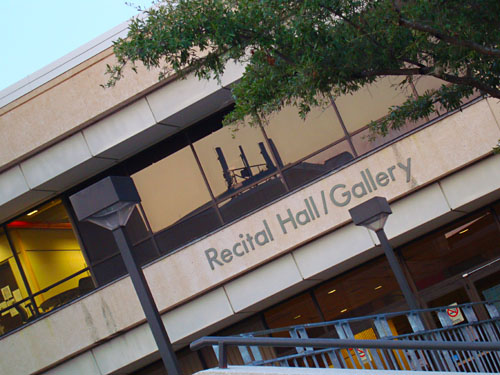
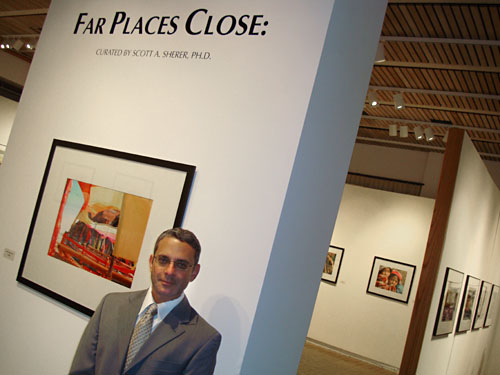
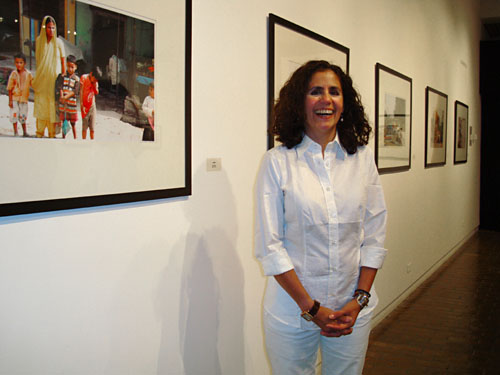
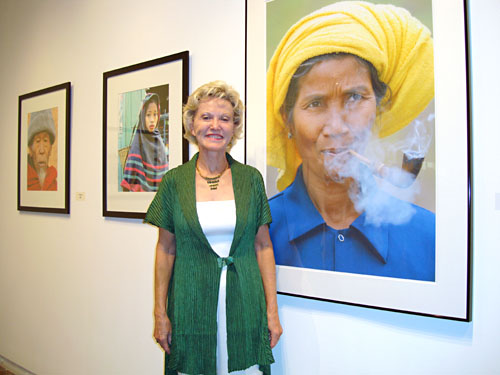
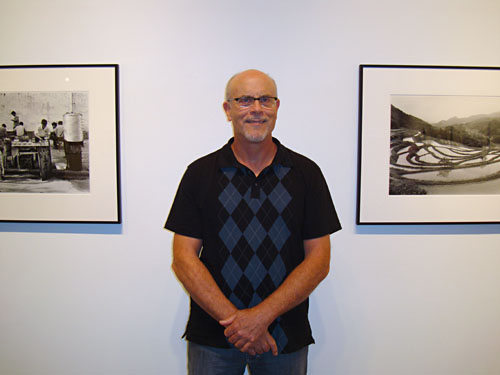
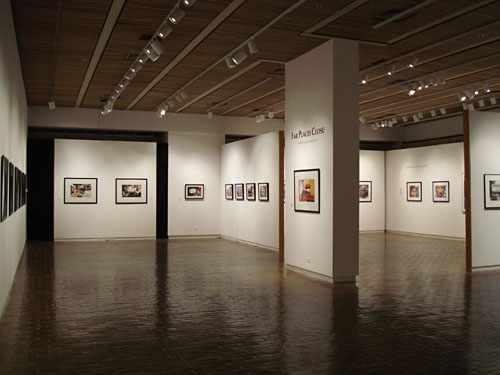
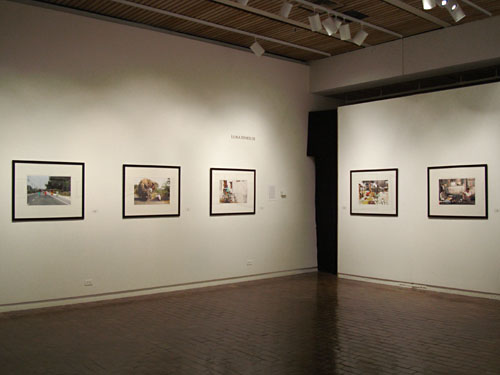
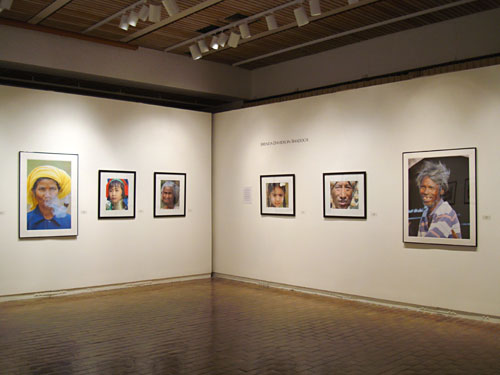
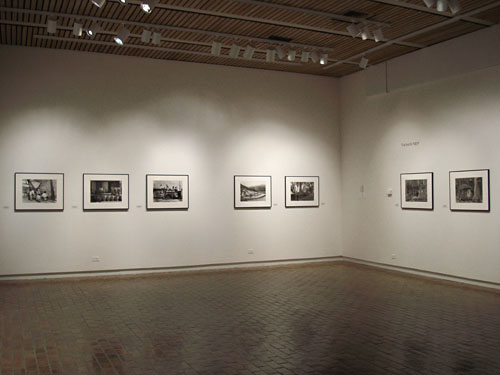
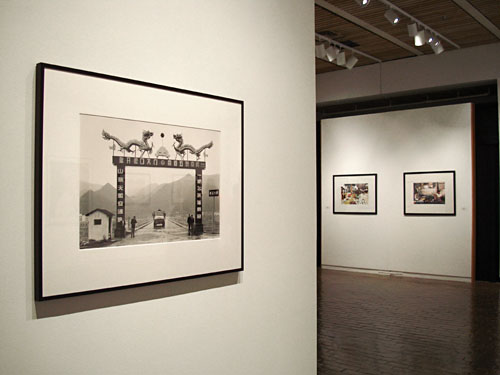
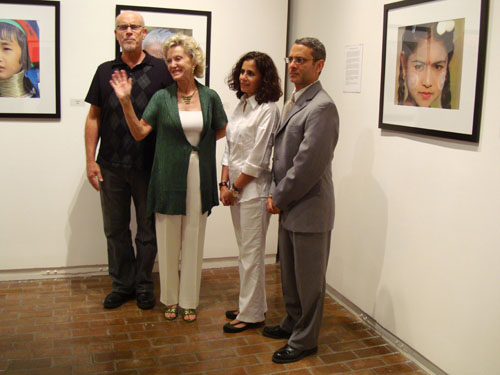
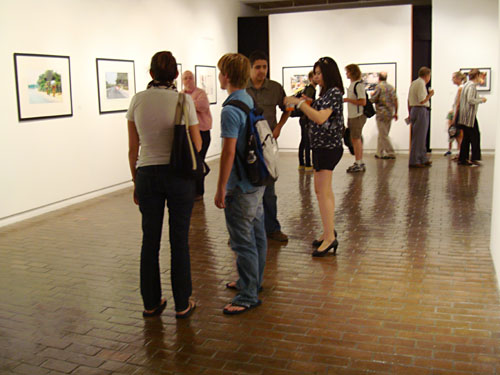
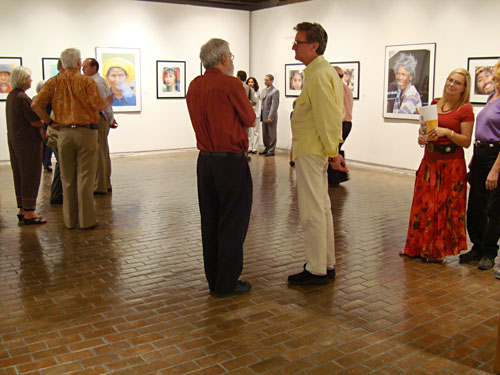
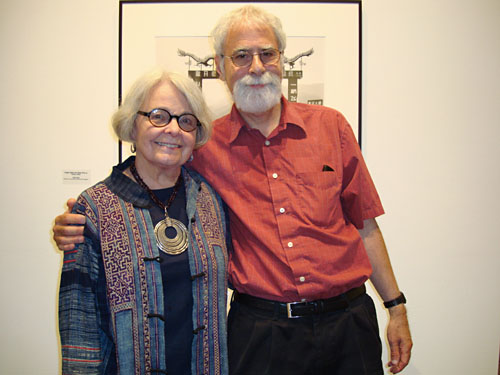
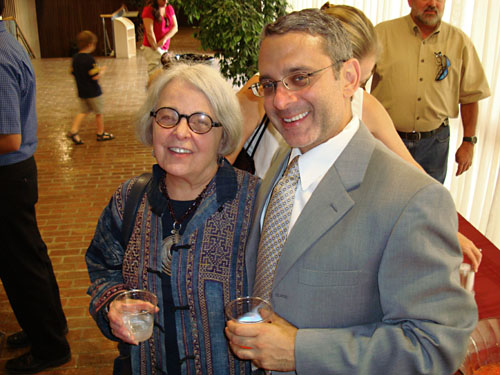
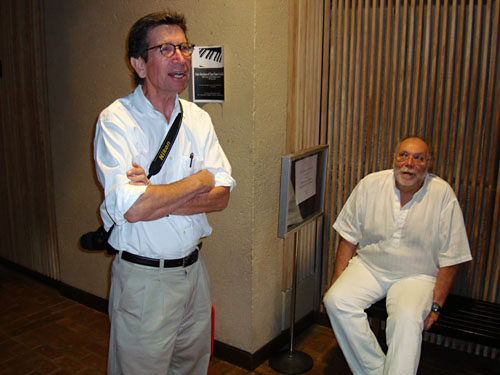
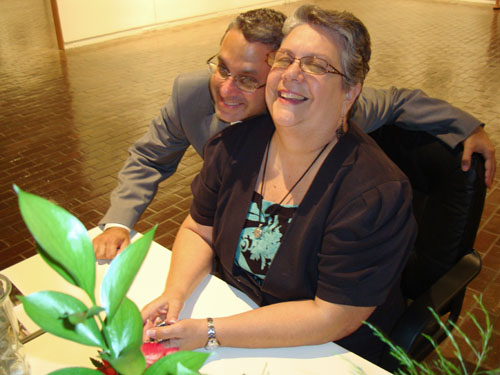
Nice Work Michael
Richard Mogas (Howling Wolf) | 10:35 am on the 4th of September, 2009
Brenda
From the partial view and other close ups of your photographs I feel they capture something special about these people you must care so deeply about. They are lucky to have you document their lives.
Pamela Sweet | 7:57 pm on the 4th of September, 2009
I was fortunate indeed to meet Brenda Davidson Shaddox several years ago. She is a truly delightful, vivacious person, and I will never forget her. She knows whereof she speaks, and photographs and writes. Maurice
Maurice E. Hebert | 8:21 pm on the 4th of September, 2009